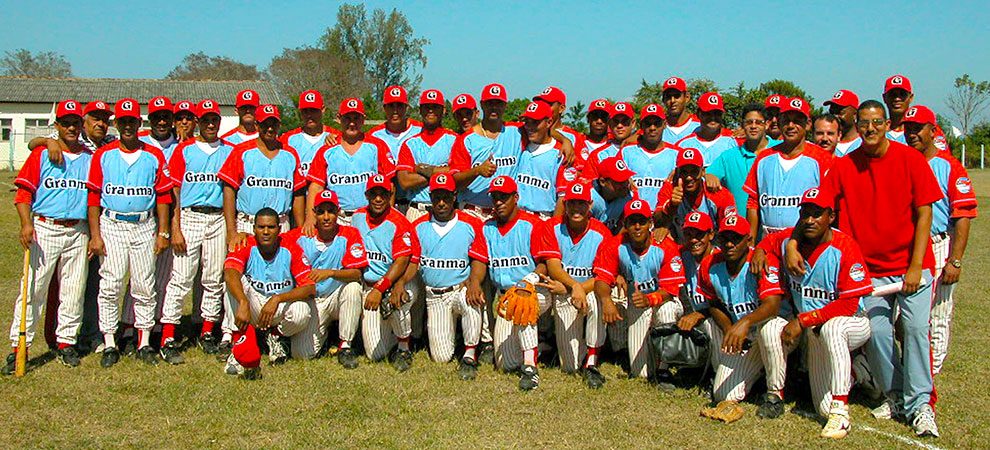Baseball tradition in Cuba is part of the identity of a people that breathes baseball in all its regions, from East to West. The southeastern Cuban province of Granma is represented for the first time in Cuban Baseball during the 17th National Series held from 1977 to 1978. The Granmans jumped from anonymity inconspicuously to obtain the eleventh place and the same number of victories as defeats in the first National Series where they were presented themselves under the name of Granma.
They assumed the nickname of the Alazanes, an idea of the outstanding sports narrator Granman Pachi Espinosa. It alludes to the horse-drawn carriages tradition of the city of Bayamo which are part of the idiosyncrasy of its inhabitants.

The outstanding shortstop Agustín Arias, one of the most important athletes on his position during the sixties and seventies, was the most relevant figure in that squad made up of unknown players.
After the retirement of that star like player, Alazanes de Granma passed without grieves or glories for 10 years in the national series. But the last day of the 1986-1987 series meant a turning point in the Eastern team’s biography, as they managed to position themselves in a fifth place in the final table. Of course, this was the result of a decade of effort where gradually, the inhabitants of these eastern lands had turned their province into a quarry of excellent players.
In the 1988-1989 series the Alazanes won their first postseason ticket and won a convincing third place. It was undoubtedly a shocking event for the town, which pointed the team’s definitive breakthrough to the vanguard group of amateur baseball.
During the last decade of the 20th century, the Granmans participated in three more Playoffs and they were always located within the first five sets of the country. It is worth mentioning that throughout this first stage of the history of the Alazanes de Granma several figures highlighted many pitchers such as Ernesto Guevara Ramos, Ciro Silvino Licea, Alfredo Fonseca, Manuel Vega Tamayo and Misael López Moreno.

On its part, the offensive was consistently supported by men like Pedro Mora, Hermes Ortega, Marcos Naranjo and brothers Valerio, Santiago and Víctor Vicente Bejerano Morales. But, definitely, the most enduring example of that prodigal performance was delivered by Carlos Martí Santos, who for nearly twenty years led the club with excellence and discipline.
With the arrival of the new century, Granma matured as a team and managed to sneak into the finals in all the championships held until 2006, with the sole exception of 2002, but the title was denied to them by larger teams such as Villa Clara and Santiago de Cuba.
In the individual aspect, in the ranks of the club two of the athletes that specialists have considered among the best sluggers emerged from the winter tournament in the amateur stage: Alfredo Despaigne and Yoennis Céspedes. In addition to pitcher Ciro Silvino Licea, who was the leader of the body of pitchers of the Alazanes for many years, accumulating 204 victories in national series.
Also, other important players like the Rookies of the Year, Yordanis Samón Matamoros and Alberto Soto La O, have grown as athletes defending the colors of the Alazanes. Others like Guillermo Avilés, Roel Santos Martínez and the young talent Yoelkis Céspedes Maceo, are part of the star staff of the squad.
The headquarters of the Alazanes, the Mártires de Barbados Stadium, was built in 1949 and on December 2nd, 1956. It was officially inaugurated with a game between a team from Palma Soriano, a territory belonging to the province of Santiago de Cuba, and another from Bayamo.
Its name, “Mártires de Barbados”, honors the fencing athletes who lost their lives on the coasts of Barbados, a Caribbean island, product of the attack on broad-flight of a Cubana aircraft when they were returning to Cuba.
Since the 56th series, the history of the Alazanes gave a final turn to register them in the glorious pages of Cuban baseball, but that history is for another time.
Granma province has interesting stories of sport and culture that you can discover if you visit this southeastern Cuban territory.




























Comments
Add a comment